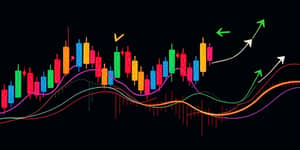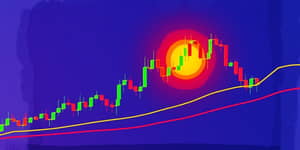
Market liquidity serves as the lifeblood of financial markets, determining how quickly assets can be exchanged without causing significant price shifts. Understanding the relationship between liquidity and trading volume empowers investors to navigate market fluctuations with confidence.
Market liquidity refers to the ability to buy or sell quickly and at a fair price. High liquidity enhances market efficiency by ensuring orders execute smoothly, while low liquidity may lead to slippage and higher transaction costs.
Trading volume, defined as the total number of shares or contracts traded over a period, acts as a primary gauge of liquidity. Monitoring volume trends helps traders assess the market’s capacity to absorb trades and sustain price movements.
The simplest liquidity metric is raw trading volume, which tallies the number of shares or contracts exchanged during a session. Highly liquid market environments often exhibit elevated volume, reflecting active participation and tighter spreads.
High raw volume may confirm a strong price trend, while unusually low volume could signal hesitation among market participants and a potential reversal.
The On-Balance Volume (OBV) indicator aggregates volume by adding it on up days and subtracting it on down days. This metric helps confirm trending price movements by revealing underlying buying or selling pressure.
A rising OBV typically validates an uptrend, whereas a declining OBV suggests persistent selling pressure that could precede further price drops.
VWAP calculates the average price paid for a security over the trading day, weighted by volume. Institutional traders often use it as a benchmark for optimal trade execution.
When market prices stay above VWAP, it indicates strong buying interest; prices trading below VWAP point to selling dominance and potential resistance zones.
The Accumulation/Distribution Line factors in where each day’s close lies within its range and multiplies that by volume. It serves to confirm whether volume supports a sustained uptrend or warns of hidden distribution.
Divergence between price and the A/D Line—such as price making new highs on decreasing A/D—can be an early sign of a weakening rally.
Chaikin Money Flow measures buying and selling pressure over a set period, typically 20 days, by combining price location and volume. A positive CMF indicates buyers are in control, while a negative CMF signals selling pressure.
Traders use CMF to confirm breakouts and trend shifts, especially after consolidation patterns where volume clues reveal the genuine breakout direction.
PVT refines OBV by factoring in the percentage change in price before applying volume, making it less prone to distortion from unusually large volume spikes.
This sensitivity to price shifts allows PVT to identify emerging trends more quickly, aiding in timely entry or exit decisions.
Volume Rate of Change tracks the percentage change in volume between two periods, spotlighting sudden surges or drops. Sharp increases in VROC often precede significant price moves or breakouts.
By comparing current volume against historical norms, traders can anticipate volatility and position accordingly.
The Volume Profile displays traded volume across different price levels instead of time. It highlights zones of high activity, known as value areas, and low-activity regions, often acting as support or resistance.
Understanding these price-based volume clusters provides a deeper perspective on market sentiment and potential reversal points.
While volume metrics are pivotal, traders must also consider order-book dynamics that influence liquidity costs and resilience.
Integrating volume indicators with price patterns leads to more nuanced, data-driven insights. Here are three key approaches:
Beyond tools and strategies, contextual factors shape liquidity and risk profiles. Awareness of these elements ensures robust execution and capital preservation.
Effective market liquidity analysis hinges on a blend of volume-based indicators, order-book insights, and strategic interpretation. By mastering these tools, traders can make more informed trading decisions, minimize execution costs, and capitalize on market opportunities.
Arm yourself with robust analysis techniques, monitor volume dynamics diligently, and stay attuned to liquidity shifts to thrive in today’s fast-paced markets.
References













